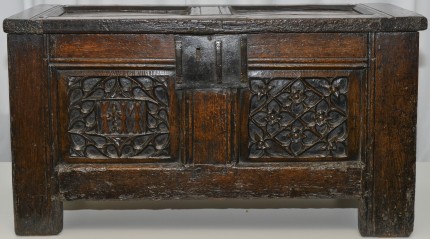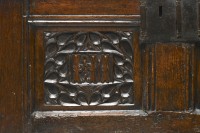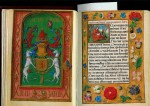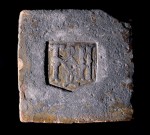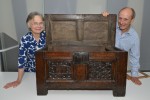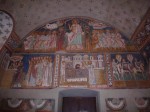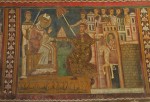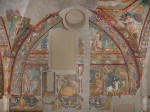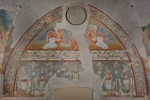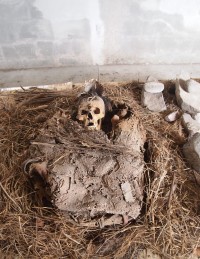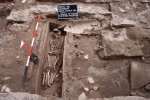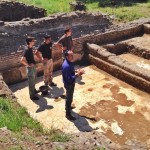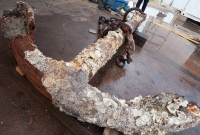 A large anchor that may be the sole surviving relic of Captain George Vancouver’s 1792 exploration of Puget Sound is now at Texas A&M’s Center for Maritime Archaeology and Conservation where it will be conserved and, if all goes well, conclusively identified. If it does prove to be the anchor lost by the HMS Chatham on June 9, 1792, it will upend convention historical wisdom.
A large anchor that may be the sole surviving relic of Captain George Vancouver’s 1792 exploration of Puget Sound is now at Texas A&M’s Center for Maritime Archaeology and Conservation where it will be conserved and, if all goes well, conclusively identified. If it does prove to be the anchor lost by the HMS Chatham on June 9, 1792, it will upend convention historical wisdom.
The anchor was discovered in 2008 by sea-cucumber diver Doug Monk when his airhose got caught on it off Whidbey Island. He and a group of amateur historians including medical device salesman Scott Grimm spent years researching the artifact, reading ship logbooks, explorers’ journals, nautical charts, 19th British patent office records as well as numerous books. They concluded that the anchor was the Chatham‘s that got stuck in a large rock grouping and broke free when its hemp cable snapped.
 The loss of the anchor and the failed attempts at recovery were recorded in the log books, but the exact location was unclear. Historians have long held that it was lost 30 miles away from Whidbey Island in Bellingham Channel, but the channel has been searched repeatedly and no anchor has ever been found. The Bellingham theory also assumes that Vancouver’s ship, the HMS Discovery, and its smaller companion the Chatham were together when the anchor was lost. Several journals said they were, but Grimm noticed the wording in those entries was identical, as if they’d been copied from each other at a later date. When he stuck to the witness accounts from the Chatham‘s crew, the terrain they described and the logged compass bearings fit Whidbey more than Bellingham. He also contacted the National Oceanic and Atmospheric Administration whose maritime history experts calculated that on the day of the accident, the currents around Whidbey were 5.5 knots, much faster than they were in Bellingham Channel.
The loss of the anchor and the failed attempts at recovery were recorded in the log books, but the exact location was unclear. Historians have long held that it was lost 30 miles away from Whidbey Island in Bellingham Channel, but the channel has been searched repeatedly and no anchor has ever been found. The Bellingham theory also assumes that Vancouver’s ship, the HMS Discovery, and its smaller companion the Chatham were together when the anchor was lost. Several journals said they were, but Grimm noticed the wording in those entries was identical, as if they’d been copied from each other at a later date. When he stuck to the witness accounts from the Chatham‘s crew, the terrain they described and the logged compass bearings fit Whidbey more than Bellingham. He also contacted the National Oceanic and Atmospheric Administration whose maritime history experts calculated that on the day of the accident, the currents around Whidbey were 5.5 knots, much faster than they were in Bellingham Channel.
 Earlier this year Monk and Grimm secured the necessary permits to recover the anchor. On Monday, June 9th, exactly 222 years after the Chatham lost its anchor, the one off Whidbey Island was raised. It spent a few weeks on display at the Northwest Maritime Center being prepped for transport, then Monk and Grimm loaded the anchor into a custom-made tank on the back of a truck and drove it the 2,200 miles to Austin. The anchor is 10 feet long and weighs about 1,400 pounds, so that was no mean feat. They also had to keep the anchor wet the whole time with soaker hoses.
Earlier this year Monk and Grimm secured the necessary permits to recover the anchor. On Monday, June 9th, exactly 222 years after the Chatham lost its anchor, the one off Whidbey Island was raised. It spent a few weeks on display at the Northwest Maritime Center being prepped for transport, then Monk and Grimm loaded the anchor into a custom-made tank on the back of a truck and drove it the 2,200 miles to Austin. The anchor is 10 feet long and weighs about 1,400 pounds, so that was no mean feat. They also had to keep the anchor wet the whole time with soaker hoses.
The anchor is now in the hands of a team headed by Jim Jobling, a research associate at the Texas A&M center’s Conservation Research Laboratory, a veteran in tackling such tasks.
Jobling estimates work on the anchor will take 18 to 24 months, at which time Grimm and Monk will retrieve it for the trek back to the Northwest and hopes of finding a museum or other location for its permanent display.
“Our goal is definitely to keep it in the Northwest,” Grimm said.
“Also, we’re confident the anchor is from the HMS Chatham, and we’re confident—certainly hope—that the conservation work at Texas A&M will uncover some markings that show beyond a shadow of a doubt that it belonged to the (British) crown,” he added.
They university team will use a variety of methods — chemicals, electricity — to remove the thick concretions that may be obscuring any marks identifying the anchor. The design of the anchor does fit the admiralty pattern, but makers didn’t always put a mark on their work in the 18th century, so we may never get a firm yea or nay on whether the anchor belonged to the royal navy.
